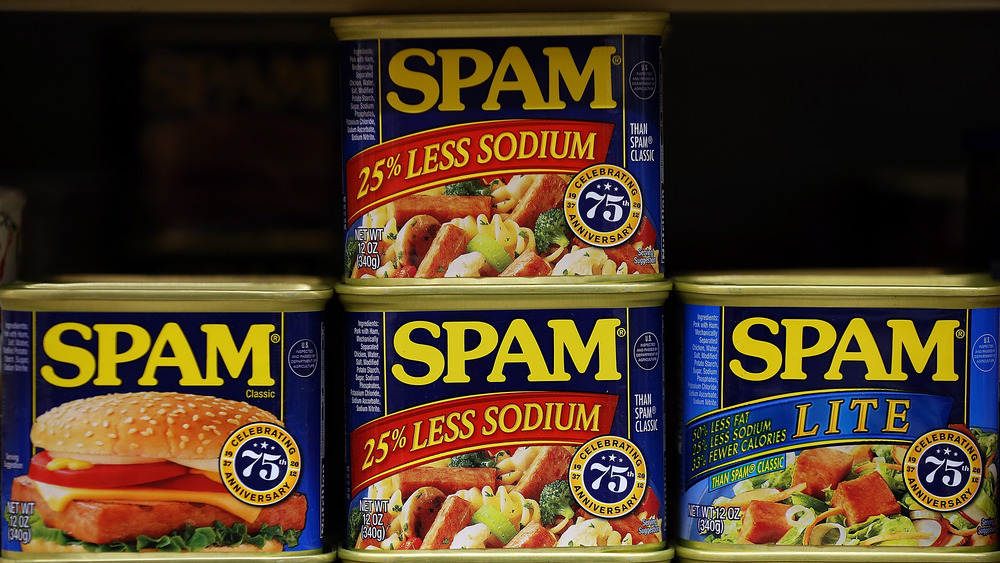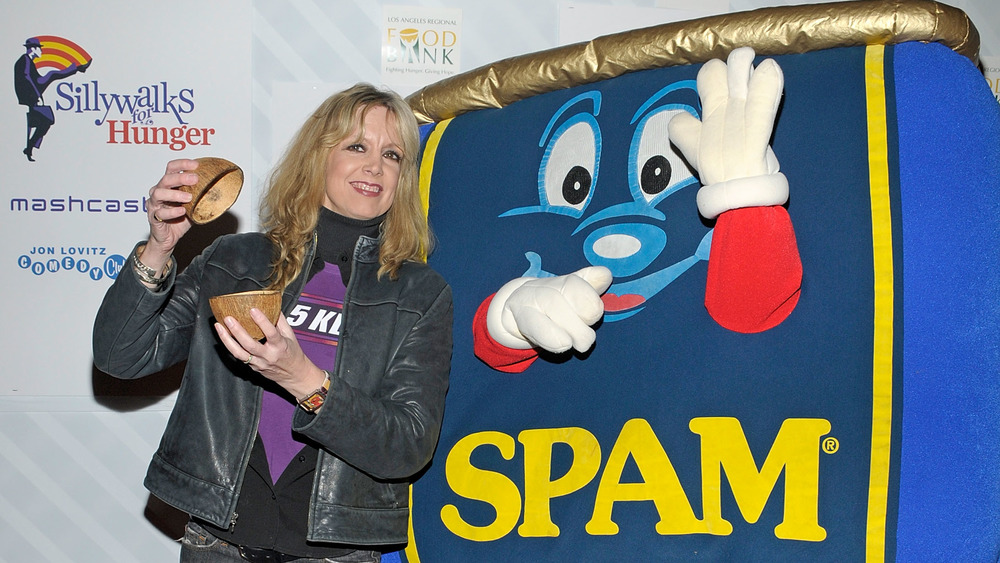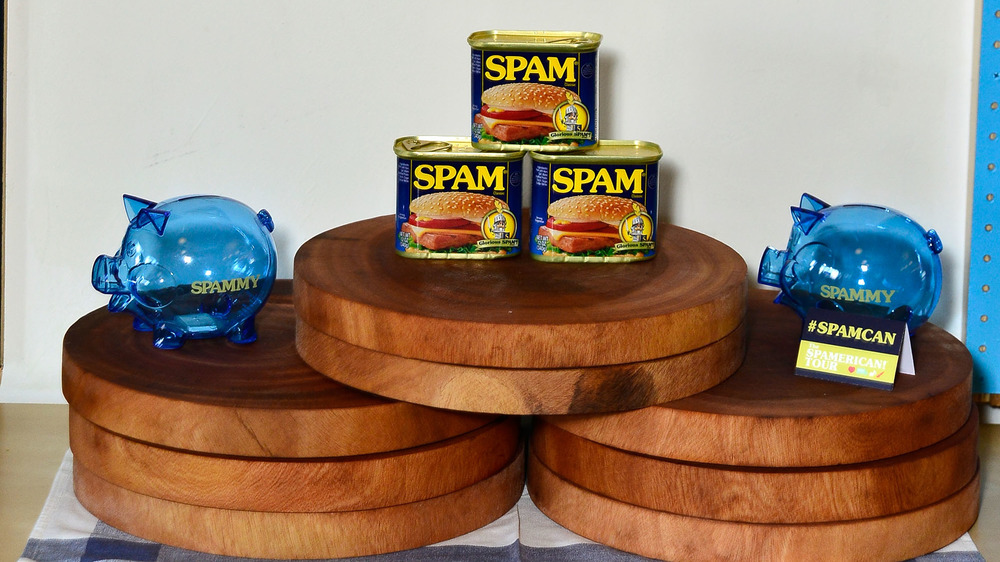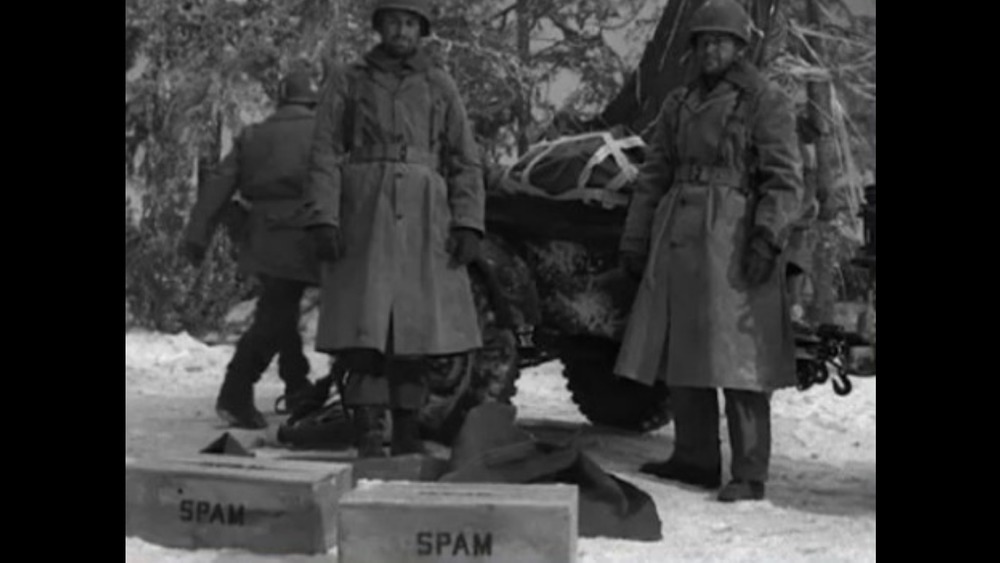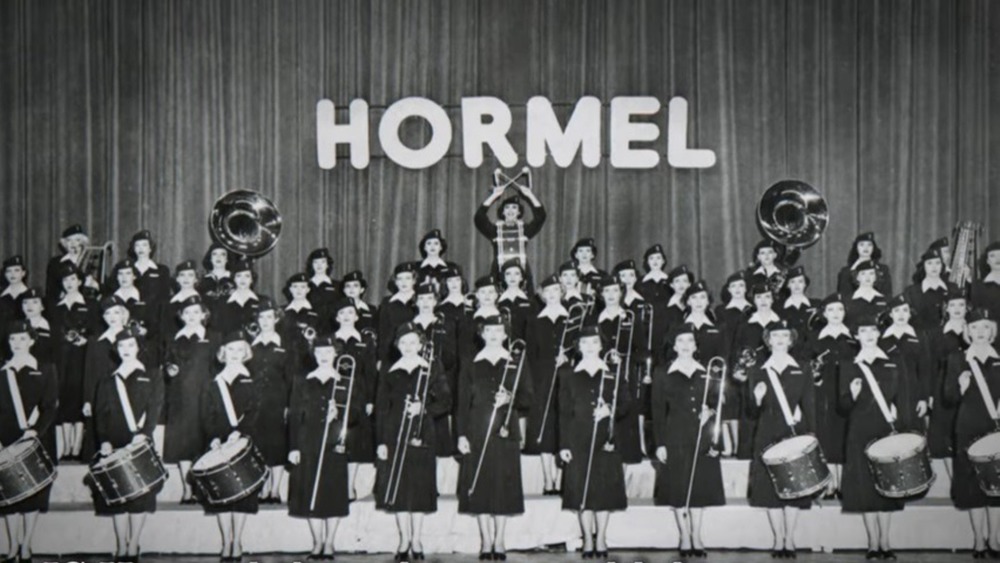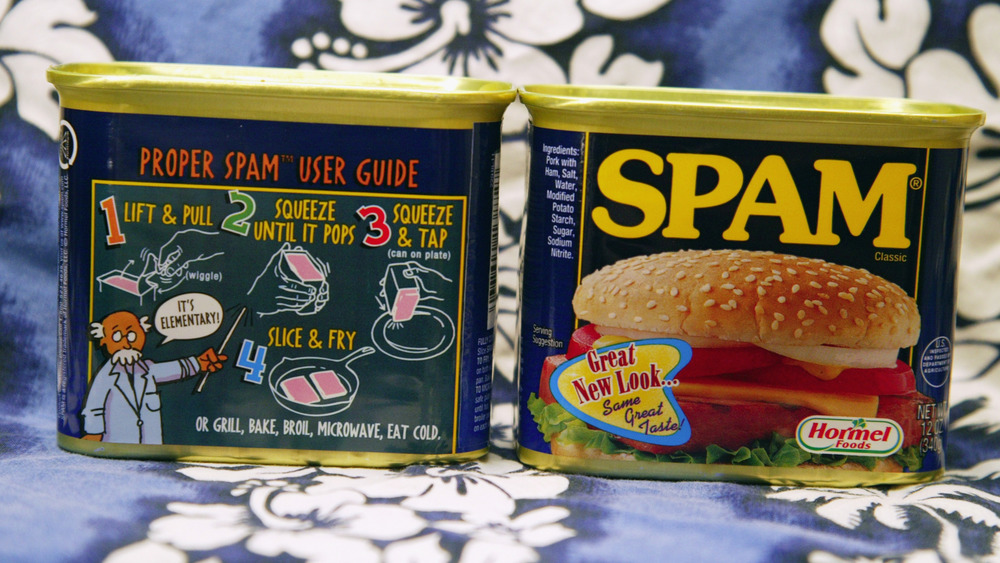What You Didn't Know About The SPAM Museum
If you know anything about the SPAM Museum of Austin, Minnesota, you may well be a SPAMbassador – according to the official SPAM Museum website, SPAMbassadors are the "noble food fellows" who "make sure your visit is full of wonder and hunger" and are responsible for giving tours of the only museum devoted to the classic canned luncheon meat that's been delighting fans since its introduction to the world by Hormel Foods in 1937.
The SPAM website reports that there are 12.8 cans of SPAM luncheon meat eaten every second. There are 13 different varieties of SPAM sold in 44 different countries around the world, and over eight billion cans of SPAM products have been sold. Why shouldn't this culinary phenomenon have its own museum? Truly, SPAM is the star of Hormel Foods, which is also behind such beloved pantry staples as Dinty Moore stew and Skippy peanut butter. In fact, the museum started out as "a small storefront company museum in a local mall" in 1991, per Roadside America, but the public cared about SPAM more than any other product and so it was renamed the SPAM Museum.
According to Wired, Hormel gave up a legal challenge on its canned meat's name being used to denote unwanted e-mail. Now, if it's junk mail in your inbox, it's spam; if it's lunch, it's SPAM. (If it's a comedy sketch, it's Monty Python.)
The Spam Museum has grown over the years
The SPAM Museum was such a hit that in 2001 Hormel moved it to its own dedicated building, a former KMart on North Main Street in Austin. As reported by the Austin Daily Herald in October 2002, the museum received over 94,000 visitors hailing from all 50 states and 14 foreign countries during its first year of operation. It also served as the base for the city's SPAM Jam, a festival that attracted over 30,000 revelers.
In 2016, the museum moved yet again to a "new and improved" location, as reported by CBS Minnesota, where it remains to this day at 101 3rd Avenue NE, open seven days a week. Hormel Foods president James Snee touted "a mix of old and new attractions," including a "world market" showcasing SPAM recipes from around the world, interactive videos and games, and the opportunity to race other SPAM Museum patrons "to see who can make their SPAM product the quickest."
A very special kind of museum
Per Statistica, the Metropolitan Museum of Art is the most visited museum in the United States ,with 6.77 million visitors per year. While its collection "spans 5,000 years of world culture, from prehistory to the present and from every part of the globe," according to its website, it doesn't have "unusual SPAM varieties — including teriyaki and macadamia nut" available for viewing, nor are visitors "served meat cubes on pretzel sticks while learning how cans of SPAM helped win World War II."
These are just two of the exhibits available at the SPAM Museum, as noted by NBC News on the occasion of the museum's 2016 reopening. Popularity clearly doesn't mean everything. Furthermore, the museum offers its guests free samples, or SPAMples, and anyone still hungry for more SPAM after that may consult a list of restaurants that use SPAM in their menus, or try making a restaurant-inspired SPAM recipe, including Fried SPAM Ball With Spicy Ranch and or a Hot Pressed Cuban SPAM-wich.
Spam: unsung hero of World War II
In 2017, travel program The Jet Set, as seen on YouTube, went to the SPAM Museum and spoke with Nicole Behne, Hormel's Marketing Director of Grocery Products, about SPAM's role as an "unsung hero of World War II." In the section of the museum devoted to SPAM and the armed forces' close relationship. Behne explained how Hormel shipped "over 100 million pounds [of SPAM] to the troops" because "it was a protein that they could take anywhere with them." Roadside America notes that Hormel even had "a scowling, bomb-throwing cartoon pig" named Slammin' Spammy who served as a wartime mascot, who naturally has his own exhibit at the SPAM Museum.
The Defense Media Network reported that not only did the United States armed forces receive so much SPAM that they were sometimes eating it three times a day, but it was also included in relief packages sent to Great Britain and the Soviet Union. British Prime Minister Margaret Thatcher, a teenager during World War II, later called SPAM a "war-time delicacy" and Soviet leader Nikita Khrushchev wrote in his autobiography, "Without (SPAM), we wouldn't have been able to feed our army."
The Hormel Girls sang about SPAM for the masses
Jay Hormel, who took over as head of Hormel Foods after his father George retired, was an innovator when it came to marketing Hormel products, which makes for lots of entertaining SPAM Museum exhibits. Another Hormel connection to World War II came with Jay Hormel's development of the Hormel Girls. Per Prairie Public, available on YouTube, Jay Hormel founded the Hormel Girls in 1946 "to create jobs for women veterans of World War II and to promote Hormel products."
There were eventually 60 Hormel Girls who danced, sang, and played music, and had a top-rated radio program on three national networks. As Nicole Behne told The Jet Set, the Hormel Girls would travel around in branded white Chevrolets and play shows at night and go to grocery stores during the day to pass out samples. People who had been stationed overseas during World War II were already familiar with SPAM, and the idea was so make it so homemakers were also SPAM-aware.
Time to visit SPAMburger Alley
So what else does the SPAM Museum have to offer? Roadside America offers an eyewitness account of the museum's many holdings, including a wall of 3,390 cans of SPAM (the number reportedly has no significance and is merely the number of cans that would fit in the museum lobby), a section called "SPAMburger Alley" featuring "a SPAM patty 4,800 times larger than life-size," a conveyor belt moving an endless parade of SPAM cans in a continuous loop, and yes, the song from the infamous Monty Python sketch is indeed played repeatedly. Certainly, we can all think of worse ways to spend a few hours.
The museum's reviews on Trip Advisor are nearly uniformly glowing, with visitors commenting on the "warm and friendly" staff, the "interesting and educational" exhibits, and the rare opportunity to learn just how many kinds of SPAM there really are. If you're not going to find yourself in Austin, Minnesota in the near future, free live virtual tours are available every weekday. The SPAM gift shop features "SPAM-branded beverage koozies, tennis balls, and glow-in-the-dark boxer shorts" as well as all 13 varieties of SPAM. There is an online version, but unfortunately, as of this writing, "many flavors are currently out of stock."
